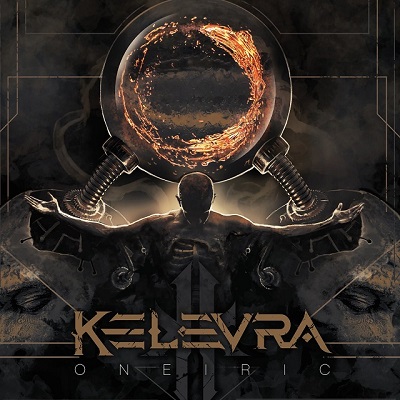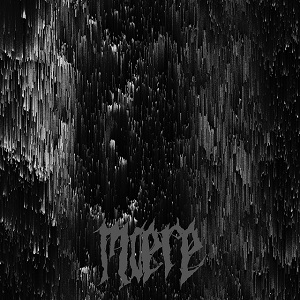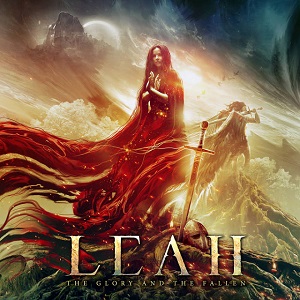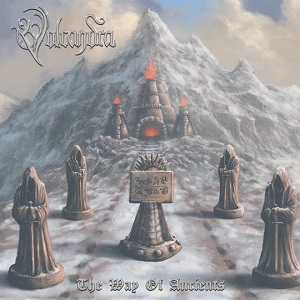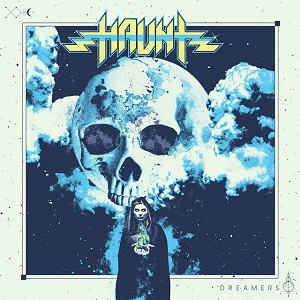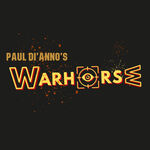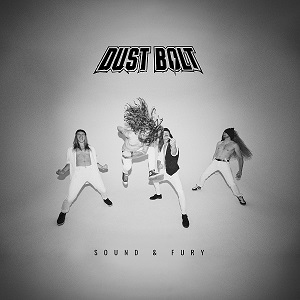’Tis The Season To Eat, Drink & Be Metal! SATYRICON Mainman Talks Wine, Champagne In BraveWords Exclusive!
December 30, 2014, 9 years ago

’Tis the season to eat, drink and be metal! And we can’t think of a better way to celebrate the holidaze than to sit and enjoy the fruits of labour from Satyricon visionary Satyr (Sigurd Wongraven) and his line of Wongraven wines and champagne. Developing a passion for wine through nearly 20 years of touring worldwide, Satyr has cooperated with select winegrowers to produce wines from classic regions in different styles. He is also involved in other phases of production such as harvesting and bottling. And of course, he designs the labels. Pairing black metal with fine wine/champagne is unusual to say the least, but Satyr’s palate, like his musical prowess, knows no borders. So let’s dig deep into the soil where Satyr is changing how we harvest and process grapes into nectar of the satanic gods!


BraveWords: There is a certain extreme elegance that the black metal community embraces and its no surprise that such a visionary like yourself has ventured into the fine art of wine making.
Satyr: "Black metal is extremely versatile and, to me, that's what makes the genre so interesting."
BraveWords: What was your vision for this? What was on your palette... what did you want to taste?
Satyr: "I totally disagree that a wine is a good wine if it only tastes nice. For me, a wine not only has to taste nice, but it also has to tell me a story of where it's from. In fact, Dirk Niepoort, one of the best wine makers in Portugal, sent me a list of wine recommendations for my stay in Portugal a couple of years ago. I tried all of his recommendations and followed-up with a long text message. I said, 'Dirk, many of the wines your recommended are nice, but are not really attractive to me, because, even if they are nice, they could be from America, Italy, South Africa or whatnot.’ To me, his colleagues in Portugal are lacking the confidence in terms of trying to express terroir - the climate, both the meso and micro climates, even down to the particular vineyard parcel. Dirk wrote me back and said something along the lines of 'Dear Sigurd, this is why you are my friend, and this is why we talk wine... I couldn't agree with you more. So, I try to find a balance or bring out the things that I like in wine. I'm more interested in elegance and refinement moreso than power and muscle. I have my own Burgandy Barolo and Langhe Rosso. The Langhe Rosso is like an every day wine from Piedmont in the northwest of Italy which is famous for the Barbera grape and the Nebbiolo grape. From the Nebbiolo grape is born two of the most prestigious wines of Italy, that being Barolo and Barbaresco. You can also use these to make good blends for everyday wine. If they are within the Langhe county, which is within the states of Piedmont, we call it a Langhe Rosso - meaning a red wine from the hills of Langhe. I also make a certified organic champagne, where we get the grapes from three different growers from three different places in the Champagne Appalachian. The wine is vinified by a champagne house. I blend together with the Enologist, which is the term for a winemaker, and we do the balancing of the sugar together. About 70% of the wine is sold by his label in France, and the rest I sell under my label in Norway.”

BraveWords: You can't really bullshit this wine stuff. You need to walk the walk and talk the talk.
Satyr: "I also do white wine from the southwest of France, but I'm not going to continue to do it because I hate the importer in Norway, which has totally taken the fun out of the project, and I've been so determined as it comes to wine. The thing is that being a professional musician can also really take the fun out of music, and I made a promise to myself to not let that happen with wine. I don't have to do wine; I do it out of sheer love. So, as soon as I have people coming in saying I can't do this or that, I'm out. I'm just going to walk away. I have a life as a musician. I don't have to do this.”
BraveWords: This is big business, especially with the world of rock entering the food and beverage industry.
Satyr: "I don't do a Satyricon wine. I was very determined not to do anything like that. I'm just a wine enthusiast, and I want my wine to be wine and not merchandise. As an example, there is the Motörhead wine, where Lemmy has said that he has never been a wine drinker, but now he apparently drinks wine because he can't drink whisky anymore. Quite frankly, to me, it's wine of no interest. I would never, ever buy something like that to drink. Because of my love, I collect wine, I read wine books, and I have a wine blog in the Financial Times, and I'm currently writing a wine book, as well as doing lectures for wine clubs. So, for me, it's like a whole different world. My wines are under the name Wongraven, which is my last name. I wanted to create a brand like the old world wine makers who used the family name.”
BraveWords: Where did the roots come from?
Satyr: "I guess one of the things that got me into it was food. I remember in my early twenties, after finishing Rebel Extravaganza (1999), I wanted to take the producer out for some fine food, as the project was a long one.”
BraveWords: ... and a beautiful one!
Satyr: "I took him to a restaurant thinking, fuck, this is expensive. I mean, I've had nice food before, but this place was different. I didn't realize that food could be that good. I also had never experienced service that good. The whole experience of the night was just in a different class. It was fantastic. So, that really got me into food, and wine naturally followed. Prior to that, I would just always order water with my food, especially since I was often driving home from the restaurant. But, people starting recommending pairings of food and wine, such as so-and-so particular wine goes very well with the lamb. I finally gave in and tried.”
BraveWords: Can you tell me, ideally, what food you would pair with your particular wines.
Satyr: "The Barolo, one of the classics in Piedmont would be to pair it with risotto and lamb. It also goes really well with steak, but it is the style of wine that it is best with aged, hung meat. The Longhe Rosso, which is the every day wine from Piedmont, I try to balance the acidity and tannins in a way that makes it very versatile, where it could go with red meat, white meat, and pasta. I also try to make it in a style where it works very well on its own. The champagne, I have to say that the cliche of champagne going with anything is true. I've had really interesting, absurd experiences, such as a friend who was making deer for my family. I had no idea what to bring out for this meal, so I said why don't we just skip wine for this dish and we will bring it out for the next dish. But, we had our glasses of champagne in front of us, so I decided to take a sip, and it paired excellent. In fact, it was a vintage champagne from the 1960s. I find that with champagnes, I like when they are not all about bubbles and acidity. I prefer when they have the qualities of an ordinary wine.”

BraveWords: I find it hard to drink. All the cheap stuff is like glorified carbonated water, unless you get to the fine champagnes like a Dom Pérignon or Krug.
Satyr: "Yeah, it is. I find that champagne is one of the things that takes time to understand. When I got into wine I wasn't a huge fan of champagne. I was wondering why people I knew who were heavily into wine, and had been into heavily into wine for more than 20 years were so into champagne. But, since then, I've learned that there are very many good non-vintage champagnes, and there are champagnes that are definitely enjoyable in their youth. But, as a general rule of thumb, for champagne to show its true greatness, an aged vintage champagne is far superior. As an example, if you had, right now, a nice bottle of something from the ‘80s, and had never tasted anything like that, I'm certain you would be blown away by it. They have such incredible depth, flavour concentration, and persistent finish that it will last for literally minutes on your palette. It's the same with Madeira, from the island of Madeira in Portugal; there are many nice young Madeira's, but when you start tasting vintage Madeira's, such as ones from the 1850s, that's what it's all about.”
BraveWords: Chilean and South African wine are my personal favourites, …along with some Italian. Anything from the Southern Hemisphere really. I'm only a moderate fan of Canadian and US wines - though some from the Napa and Sonoma Valleys stick out for me. Do you understand the differences between grapes from the Southern and Northern hemispheres?
Satyr: "Yeah, there is a huge difference. For me, Pinot Noir, outside of Burgundy, not to sound arrogant, is mostly an attempt than an accomplishment (laughs). Though, I have to give credit to producers like Ant Hill Farms in the Sonoma Coast. For anyone looking for nice North American wines from classic grape varieties such as Pinot Noir and Chardonnay, the Sonoma Coast is the most happening place. It's all because of that coast climate that Sonoma Valley doesn't have. I once read an article from a wine writer who put it very well, where she said, strangely enough, that wine tends to come at its best in climates that are almost too cold. I also read in a book, by Hugh Johnson, where he discussed the reasons why there are great sparkling wines out there but nothing compared to champagne. It really comes down to the combination of the soil and climate, which gives it a rather low ripening, lending to that explosive freshness that you would rarely find in a Cava or Prosecco. Burgundy's, as well, have unique soils which are made for the Pinot grape, but it's also the fact that it's pretty cold there.”
BraveWords: What's your opinion on ice wines, which Canada is pretty famous for.
Satyr: "I think it's really well done. It's not the quality of the original German ice wines, because it doesn't have the acidity. To me, when we are talking about sweet wines, a truly great ice wine is when it has high concentration, density, depth, and high level of acidity to balance all that sugar. This is what makes the ice wine of Germany so interesting. Outside of Germany, I would prefer my ice wine to be from Canada. I think it's cool that Canada has something of its own like that. Every country should have its own specialty. This is something that is missing in the States. I mean, Napa Valley's true nature is the Bordeaux blends. There is also the Oregon, Washington, and Sonoma Coast all based on the Burgundy model of Pinot Noir and Chardonnays. I guess the closest thing I can think of today, that I can truly think to be a widespread US phenomenon, would be the use of Zinfadel. You don't see that a whole lot in Europe. I don't know know if the jury is still out, but they are suggesting that Zinfadel is the same grape as Primitivo from Puglia in Italy, so maybe Zinfadel is not as original as we once thought.”

BraveWords: Are there any bands out there doing it right, such as the Motörhead Shiraz or Slayer’s Reign In Blood Red, or is it all just a marketing game, as you suggested earlier?
Satyr: "To be honest, I haven't tasted it all. That said, I would guess that the wines of (Tool’s) Maynard James Keenan would interest, as he is very into it. If I'm not mistaken he makes his wines in Arizona (under the company name Caduceus Cellars). If so, I find it interesting that he produces wines in one of the hottest climates on Earth.”
BraveWords: Do you cook, or have a passion to cook?
Satyr: "I don't. But, I try to be clever about it and buy ingredients to make it simple. I made dinner for Frost for his 40th birthday, and I lined-up all these wines that he had heard about his whole life but had never tried. I brought out all kinds of wine from his birth year of 1973, such as Dom Perignon champagne, and a Barbaresco magnum by Gaia, who makes the best Barbaresco in the world. I told Frost that I can't cook, you know that, but I'm gonna buy the best ingredients and try not to screw it up. In the end, dinner turned out really good. I find that if I'm cooking at home for family and friends, it helps to have a nice glass of wine in my hand. (laughs).
BraveWords: What's your specialty then?
Satyr: "I guess I perform a little better when I do Italian dishes. I don't mean pasta, but things like meat and risotto like they do in Piedmont or Tuscany. I try to replicate the food I've been served in Italy.
BraveWords: What's your opinion of putting wine in a pasta sauce?
Satyr: "Yeah, certainly if the dish calls for it. I recall one night where my wife and I were sitting home enjoying a bottle of wine together, and she wanted to have another. I was tired at the time, so I asked her to promise me that if I brought another bottle up that she would stay up to finish it. She promised. So, I went and grabbed a nice bottle of Bordeaux 1970-something. She had two sips then said she was too tired and had to go to bed. I was like 'are you serious? Do you know how hard I had to work to buy this bottle?' She apologized but said she couldn't keep her eyes open any longer. So, I'm sitting there thinking I can't drink this on my own, so it ended up becoming the most expensive pasta sauce ever (laughs).

Wongraven Products

Wongraven Champagne Brut
Origin: France
Certified organic champagne with grapes from Marne, Aube and Reims: 50% pinot noir, 40% chardonnay and pinot meunier 10%.
Description: Unoaked with four years in contact with fermented in the bottle to safeguard primary fruit while developing complexity and depth. Champagne with good body and great freshness that fits aperitif, to cured meats, tapas, chicken, turkey or pork. Fresh and clean the scent with touches of yellow apples, citrus, flowers and buns. Very fruity in the mouth with touches of citrus, yellow apples, spices and flowers. Medium bodied with good balancing acidity, good concentration and length.
Alcohol: 12.5%

Wongraven Morgenstern Riesling 2013
Origin: Germany
Morgenstern Riesling is Sigurd Wongraven's new major venture and lovechild. The wine is a blend that Wongraven has made on the Estate Riesling, Erste Lage Herrgottsacker and Grosse Gewächs. The vineyards held by Weingut Von Winning, which is known to grow organic and biodynamic riesling world of legendary vineyards that Kirchenstück, Pechstein and ungeheuer.
"It took a long time for me to identify what my new white wine project would be, but here all pieces fall into place,” says Sigurd Wongraven. “I firmly believe the bottle variant delivers with its significant number of Erste Lage and Grosse Gewächs components. All from steel tank for a most pure and aromatic style, the box consists of Estate riesling and emerges as very appropriate for its size. I am very proud of both bottle and box and are in no doubt that this is the way to go for me.”
Description: Light straw yellow. Elegant and floral scent with hints of citrus and green apples. Crisp and delicate mouthfeel, structured and mineral finish. Good for both dishes of seafood, especially sushi and also white meat, cured ham and tapas dishes.
Alcohol: 11.5%

Wongraven Alleanza Langhe Rosso 2013
Origin: Italy
Description: Langhe Rosso is based on a dazzling 85% barbera, nebbiolo 10% and 5% dolcetto. Spontaneously fermented in steel and further maturation also on steel tank to preserve fruitiness. A solid element of the juicy barbera provides a refreshing and versatile wine style, while the relatively proportion of nebbiolo contributes to refinement, tenacity and complexity. Preg of red berries and cherries with a touch of spice and tea. Fruity in the mouth with medium body, medium tannins and good freshness. Stuck in conclusion with good length.
Enjoy Langhe Rosso with pasta, chicken, pork and lighter dishes of red meat.
Alcohol: 12.5%

Wongraven Alleanza Langhe Rosso Magnum 2011
Origin: Italy
Description: Langhe Rosso is based on a dazzling 75% barbera and nebbiolo 25%. Spontaneously fermented in steel and further maturation also in steel tank to preserve fruitiness. A solid element of the juicy barbera provides a refreshing and versatile wine style, while the relatively proportion of nebbiolo contributes to refinement, tenacity and complexity. Enjoy Langhe Rosso with pasta, chicken, pork and lighter dishes of red meat. Preg of red berries and cherries with a touch of spice and tea. Fruity in the mouth with medium body, medium tannins and good freshness. Stuck in conclusion with good length.
Alcohol: 13%

Wongraven Unione Barolo 2008
Origin: Italy
Description: Enkeltvinmarks Barolo from the historic vineyard La Pira Castiglione Falletto. The village Barolo DOCG is known for providing some of the most elegant and mineral Barola. Its a mix of three different allotments within the same vineyard ranging from 20 to over 100 years old vines. Intense and deep on scent with touches of violets, anise, cherries and tea leaves. Elegant, mineral and complex mouth with fruit characterized by cherries, cherry, tea, tar, anise and flowers. Grained and nicely integrated tannins. Rich with great finesse and concentrators. Complex and sensual Barolo is superb game dishes and dishes of red meat. Try with risotto and lamb too.
Alcohol: 13.5%
Photos by Stephan Presser Photography
Satyr live photo by Håkon Grav

